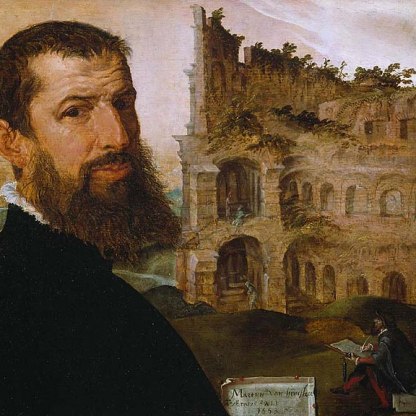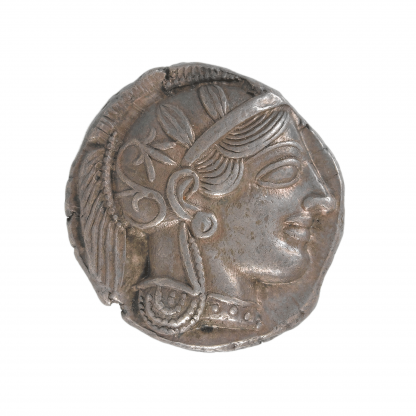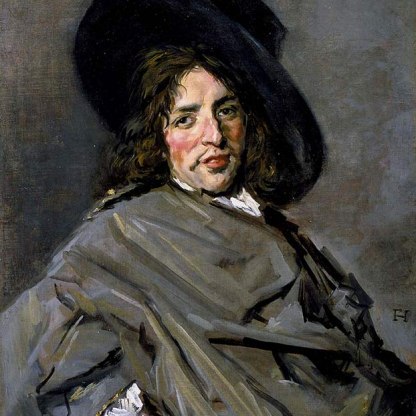Charles Compton, Fourth Earl of Northampton

When I went to Rome, the Italian artists of that day thought of nothing, looked at nothing, but the work of Pompeo Batoni.
The artist Benjamin West made this observation when he was in Rome between 1760 and 1763, at the height of Pompeo Batoni's fame. But although, as West testifies, Batoni was admired by his fellow countrymen, it was from British tourists that he received the bulk of his commissions. By the 1750s, Batoni's studio was almost as important a stopping-off point as the Colosseum for British aristocrats on the Grand Tour. Of the 265 surviving portraits from his hand, 200 represent British or Irish sitters.
Charles Compton, here aged 21, was in many ways a typical Grand Tourist: young, unmarried, aristocratic, classically educated. At the time that this portrait was painted, he had just succeeded his uncle as earl of Northampton. We know that he met with the approval of at least one female compatriot he encountered in Italy: Lady Mary Wortley Montagu, who, on 31 December 1758, wrote excitedly to her friend Lady Bute, 'The young Earl of Northampton is now at Florence. He is lively and good natur'd, with (what is a call'd) a pretty Figure.' Her observations are an incidental reminder that the Grand Tour provided many of the young men of England with a full sexual as well as a cultural education.
Batoni, who prided himself on his ability to capture accurate likenesses of his sitters, aims to confirm Lady Mary's favourable assessment. While the prettiness or otherwise of the earl's figure here might be debated, Batoni certainly does suggest 'a good nature'. He has painted an affable, sensitive face, caught in a reflective moment. Compton is serious but not stern. His stance is confident yet relaxed. And despite his impeccably aristocratic clothing – a long-sleeved white silk waistcoat, black breeches, shoes with eye-catching red heels that match a magnificent red velvet cape lined with lynx fur – there is little of the pomposity that we find in other portraits of the period.
The relationship between Compton and his dog reinforces this good impression. Perching on the arm of a chair, this sleek animal – probably a whippet bitch – gazes up at her master, tongue affectionately extended. In art, the dog is often a symbol of fidelity and this particular specimen seems richly blessed with the quality. It might well be a studio prop – similar dogs appear in other portraits by Batoni. But Grand Tourists often did take their hounds with them on their travels and the whippet here is as likely to be an actual portrait of the earl's travelling companion as an artistic emblem.
Batoni was paid well to flatter his subjects, and this he does here by the inclusion of several identifiable studio props. On the table on which the earl leans, we see a quill pen in an inkpot and five-leather bound books, one of which lies open. It is as though Compton has been studying and is looking up from his book to pursue a thought.
He gazes into the eyes of a bust of Minerva, the Roman goddess of wisdom. This is a cast of the head of the Minerva Giustiniani, an ancient statue that was particularly admired by Englishmen on the Grand Tour. Early in his career, Batoni established himself as one of the best copyists of ancient statues in Italy, and such pieces frequently appear in his portraits. A cast of the same statue can be seen in the Cambridge University Museum of Classical Archaeology, left.
The gaze he shares with Minerva establishes the earl as a man of culture, a connoisseur of art and the classics. Indeed his very pose – leaning on his elbow, his legs casually crossed – might allude to another well known classical sculpture, Praxiteles' Marble Faun, with which both artist and sitter must have been familiar.
The goddess and the books, then, suggest a man of learning, a thinker. The dog on the other hand – a hunting animal – suggests a man of action. The viewer is left in no doubt that Compton is a fully rounded individual, a suitably enlightened member of Britain's ruling class.
Pompeo Batoni has been accused of being formulaic. Other portraits use comparable poses, the same bust of Minerva, a similar arrangement of books. They also include dogs, and even the same red cape. But such an accusation ignores the sense of character with which the artist has imbued Compton here. After looking at this painting, one cannot help but be moved to learn that, only five years later, this young Italophile died of tuberculosis when acting as an ambassador in Venice.
Themes and periods
Data from our collections database
Captain the Hon. J.C.C. Cavendish, sold Sotheby's, 22 June 1944, (51) bought by F. Harbord; with Messrs Thos. Agnew and Sons, Ltd, London
Legal notes
From the S.G. Perceval fund.
Acquisition and important dates
- Method of acquisition: Bought
- Dates: 1950
Dating
- 1750s
- Production date: AD 1758
Maker(s)
- Batoni, Pompeo Girolamo Painter
Materials used in production
Read more about this recordStories, Contexts and Themes
Other highlight objects you might like
Suggested Curating Cambridge products
Sign up to our emails
Be the first to hear about our news, exhibitions, events and more…







